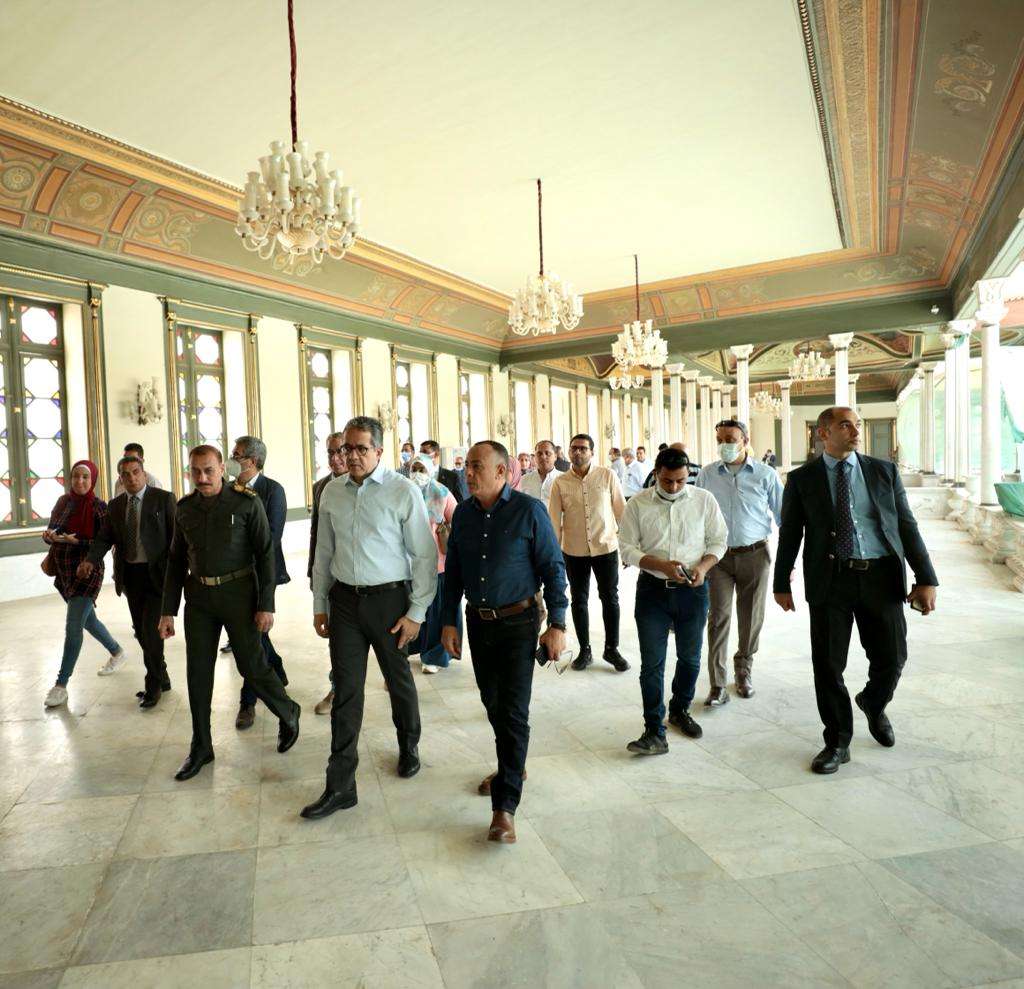This morning, Dr. Khaled El-Anani, Minister of Tourism and Antiquities, inspected the Mohamed Ali Palace in Shubra, in order to follow up on the final touches to the restoration project of the palace, in preparation for its imminent opening.
The minister was accompanied during the tour by Dr. Mostafa Waziri, Secretary-General of the Supreme Council of Antiquities, Brig. Gen. Hisham Samir, Assistant Minister for Projects, Mr. Ahmed Obaid, Assistant Minister for the Minister’s Office Sector Affairs, Moamen Othman, Head of the Museums Sector, Dr. Osama Talaat, Head of the Islamic, Coptic and Jewish Antiquities Sector, and a number of ministry leaders.
The tour included a visit to the palace’s garden, its buildings, its four halls, and its general site, where Dr. El-Anani directed the speedy completion of preparing identification cards for the artifacts inside the palace halls, with modifications to the places of some of them and the addition of other pieces from the same time period, which would enrich the Palace show.
The minister also inspected the back of the Fountain Palace building, which will be used to hold an exhibition of heritage crafts, in line with the nature of the palace.
Brig. Samir explained that the project to restore and develop the Mohamed Ali Palace in Shubra is one of the projects of the cooperation protocol signed between the Ministry of Tourism and Antiquities and the Engineering Authority of the Armed Forces in 2017.
He added that the restoration and development work and raising the efficiency of the palace included the palace buildings and its halls, where the works of the Jabaliya Kiosk and Al-Fasqiah (fountain) Palace buildings were completely completed by 100%, in addition to the general site development work, which included the establishment of electromechanical irrigation drainage networks, fire and landscaping works.
Experts also completed painting of fences, raising the efficiency of the stone floors and replacing the damaged ones, installing marble, wooden pergolas, fountains and curbs, and the construction of an indigo marina for boats on the cornice opposite the palace and a pedestrian bridge to transport tourists from the marina to the palace.
On his part, Dr. Talaat said that the palace was established by Muhammad Ali Pasha, founder of the Alawite dynasty, with an area of about 50 acres. It was built in several phases that lasted about 13 years, from 1808 to 1821, then the Jabaliya kiosk building was added to it in 1836.
The palace consists of four main halls: the throne room, the billiards hall, the dining hall and the hall of names.
Translated by Ahmed Moamar


















